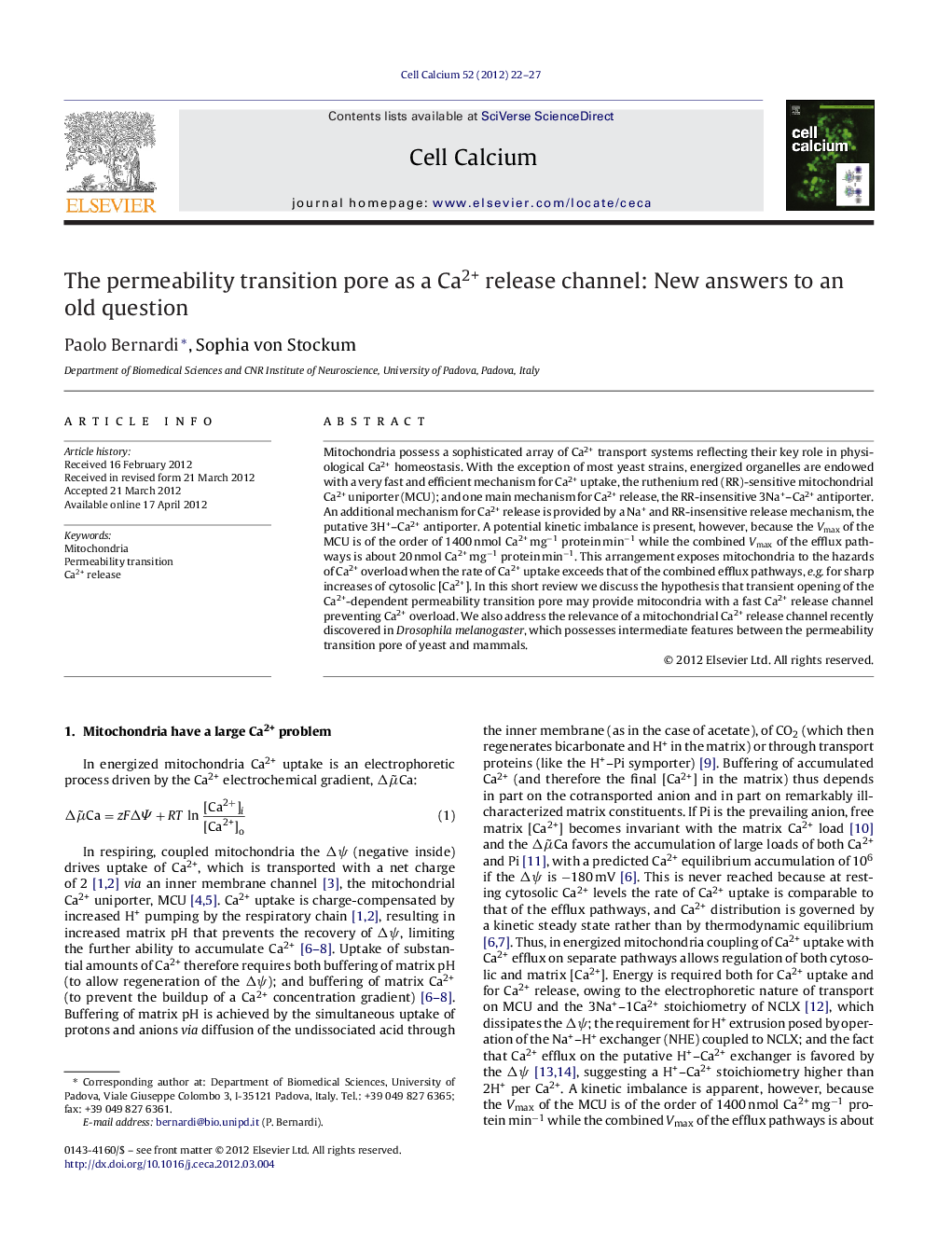| Article ID | Journal | Published Year | Pages | File Type |
|---|---|---|---|---|
| 10926276 | Cell Calcium | 2012 | 6 Pages |
Abstract
Mitochondria possess a sophisticated array of Ca2+ transport systems reflecting their key role in physiological Ca2+ homeostasis. With the exception of most yeast strains, energized organelles are endowed with a very fast and efficient mechanism for Ca2+ uptake, the ruthenium red (RR)-sensitive mitochondrial Ca2+ uniporter (MCU); and one main mechanism for Ca2+ release, the RR-insensitive 3Na+-Ca2+ antiporter. An additional mechanism for Ca2+ release is provided by a Na+ and RR-insensitive release mechanism, the putative 3H+-Ca2+ antiporter. A potential kinetic imbalance is present, however, because the Vmax of the MCU is of the order of 1400 nmol Ca2+ mgâ1 protein minâ1 while the combined Vmax of the efflux pathways is about 20 nmol Ca2+ mgâ1 protein minâ1. This arrangement exposes mitochondria to the hazards of Ca2+ overload when the rate of Ca2+ uptake exceeds that of the combined efflux pathways, e.g. for sharp increases of cytosolic [Ca2+]. In this short review we discuss the hypothesis that transient opening of the Ca2+-dependent permeability transition pore may provide mitocondria with a fast Ca2+ release channel preventing Ca2+ overload. We also address the relevance of a mitochondrial Ca2+ release channel recently discovered in Drosophila melanogaster, which possesses intermediate features between the permeability transition pore of yeast and mammals.
Related Topics
Life Sciences
Biochemistry, Genetics and Molecular Biology
Cell Biology
Authors
Paolo Bernardi, Sophia von Stockum,
